Sento (銭湯) meaning public bathhouse is also the public bathing tradition of Japan. You can experience it all over Japan because there are sento everywhere. Do note that there are certain rules and etiquette you need to follow when you are there. But rest assured that the experience is one-of-a-kind.
Table of Contents
- A Long History and Culture of Public Bathing
- Need-to-Know things
- Where to find them?
- Fast fact
- Summary
A Long History and Culture of Public Bathing
The appearance of Sento can be traced back to the Yamato Period, or more specifically 6th century Japan. At that time, only temples had baths. The bath water was used to clean religious statues or for the monks to bathe. It was not till a few centuries later that the temple baths became open to the public and even later when private bath facilities appeared.
Sento became especially popular during the Edo and Nara periods as household baths were banned for being fire hazards. Although the majority of residential buildings have private baths now and the number of sentos have greatly reduced, sentos are still easily found everywhere in Japan. So, fret not if you are thinking of experiencing a sento.
※ Tokyo Sento Assoc., “Sento History”
Sento vs. Onsen
The key difference between Sento (public bath) and Onsen (hot spring) is the water source. To be considered an onsen, the water must come from a natural source and heated naturally. Onsen water also usually carries a sulphuric scent due to the minerals it contains. The water’s acidity and alkaline levels will also differ depending on its source.
In contrast, a Sento is just an ordinary bath made bigger and public. The water is the same as one would get from their home shower or bath, and heated with technology. Some Sento may add minerals to the water to make it a therapeutic soothing bath.
Aside from that, Sento and Onsen have different purposes. Sento was created to provide a bathing facility to people without showers or baths in their homes, or in other words a basic necessity for personal hygiene. Therefore, Sento’s are priced affordably or even cheaply as users would frequent daily. Whereas Onsen is a luxury, a place for rejuvenation, relaxation, and holidays. Onsen are usually facilities in resorts and ryokan (Japanese inn), located at onsen towns and regions. They are also much more expensive.
Cultural Significance
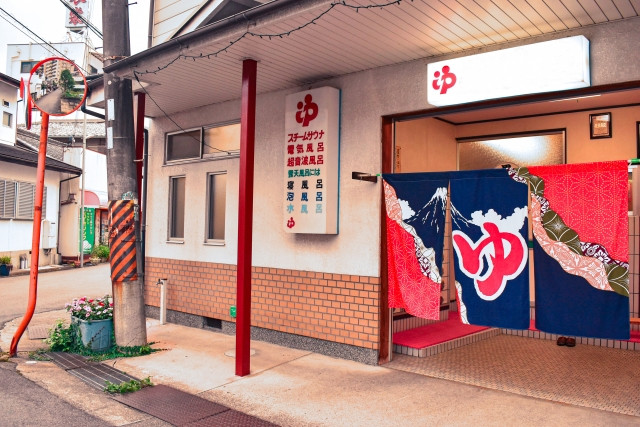
Although personal hygiene is the main purpose of Sento, it also holds religious, historical and cultural significance to the Japanese.
Enjoying a Sento isn’t just limited to cleaning one’s self, it is an act of immersion into old-age tradition. It is a way for families and communities to bond, to bring people in unity. Neighbours and friends alike would bathe whilst chatting, catching up on their daily activities and building community bonds.
Writer's Pick
Need-to-Know things
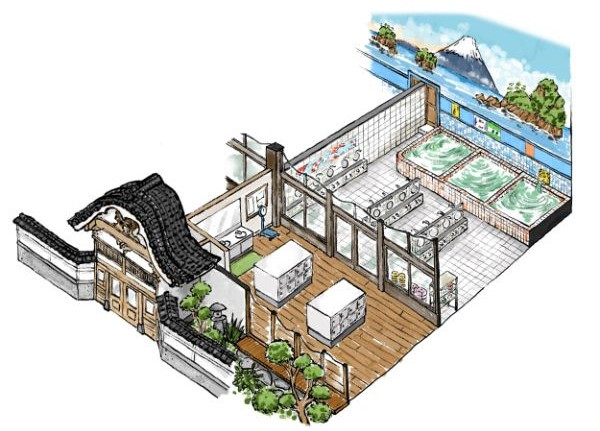
Going to a Sento may seem intimidating, especially for people unused to onsen and being naked in public. To help you, we’ve prepared some useful information and guidelines for Sento.
What does a Sento look like?
A typical Sento can be divided into four parts; the entrance, changing room, and baths. Let us look at each in detail:
Entrance
When you enter the Sento, you will notice many small lockers. These are footlockers to put your shoes away, slippers may be provided. As you make your way in, you will come to a receptionist desk where you will make payment. Note that most Sento do not provide amenities, you may need to bring your own.
To the side are the entrances to the separate gender changing rooms.
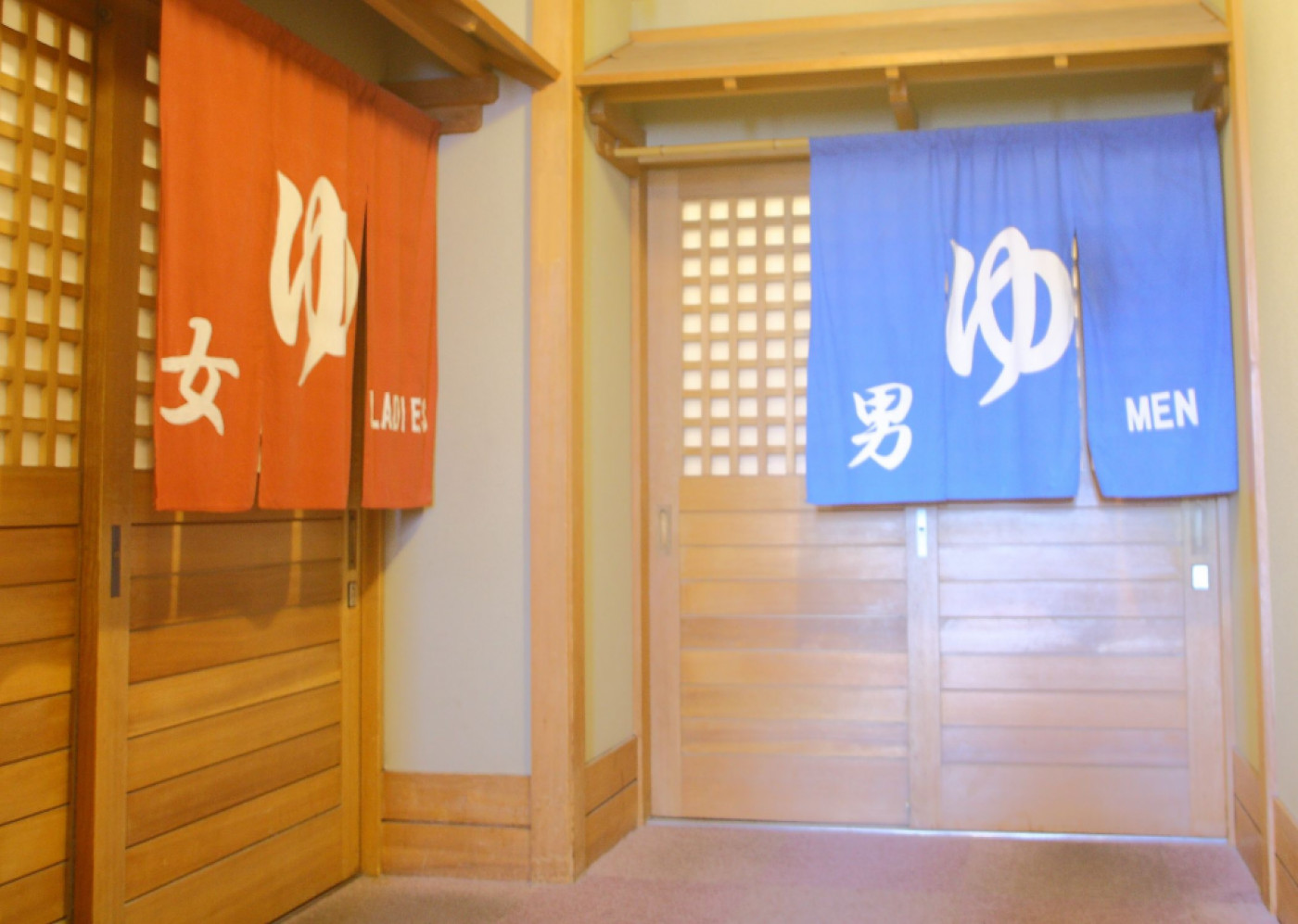
Changing Room
The separate genders are marked by Noren (暖簾) - room divider curtains. They are usually red for female and blue for male, or the Kanji 女 (Female) and 男 (Male). Pushing past these curtains will lead you to the changing rooms with lockers for your clothing and dressing tables.
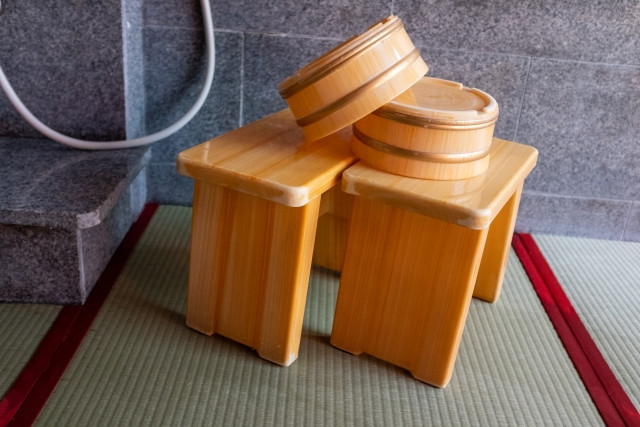
Baths
The changing rooms lead to the baths separated by a sliding door to keep the heat and moisture in. One end is the shower area with karan (shower faucets), oke (stool), and bucket. The other end will have a large hot bath. Some Sento may have more than one bath, a cold water bath, and even a sauna.
Public Bathing Rules and Etiquette
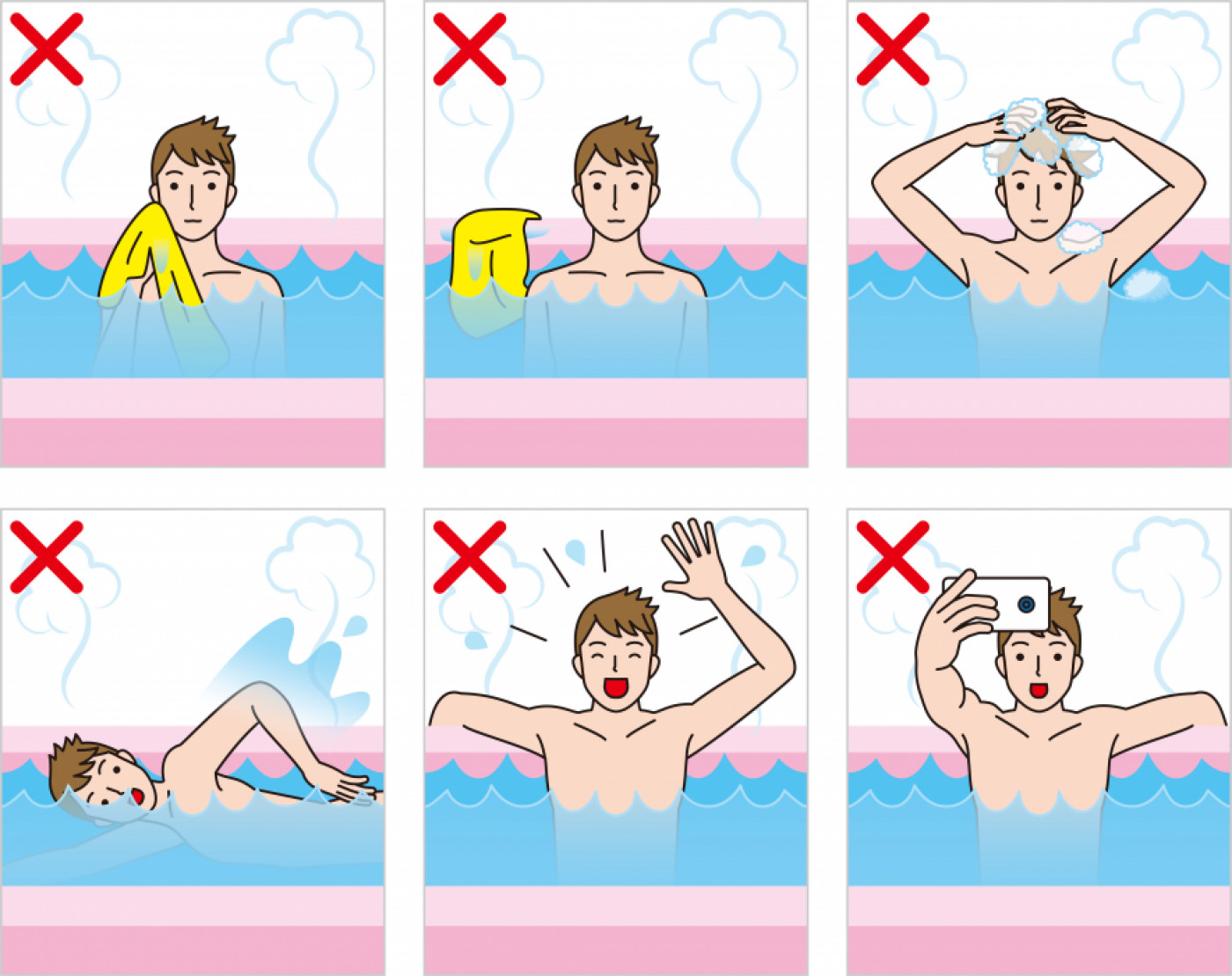
Worried you’ll make a fool of yourself, or not sure where to start?
Just pay attention to these simple bathing rules and mannerisms:
-
Always enter the bath clean. Wash properly at the shower area before dipping into the bath.
-
Do not urinate in the bath.
-
Do not bring items into the bath including towels and jewelry.
-
People with long hair must tie their hair up to keep it out of the water.
-
Be mindful of others. No splashing, swimming, and loud chattering.
-
No diving or swimming.
-
Remain seated when washing at the shower area.
List of Items to Bring
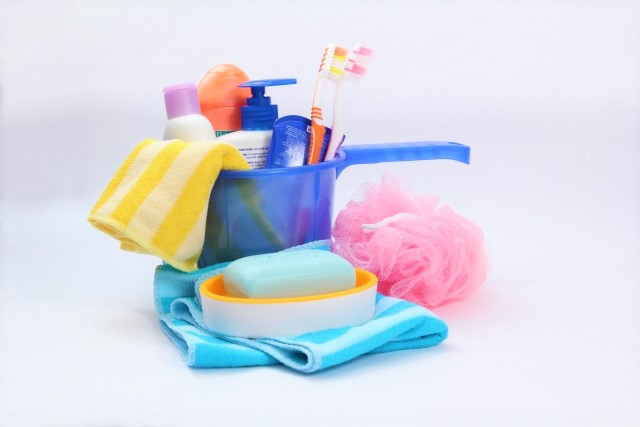
-
A change of clean clothes
-
Amenities like shampoo, soap, and face wash
-
Bath towel
-
Hairbrush and skincare product
-
Cash
Note: Remember, if it’s a sento in your neighborhood, people come here to take a bath so they bring everything with them. But if you are going to a nicer sento, they may provide some amenities (usually for a cost). Try to check beforehand.
Where to find them?
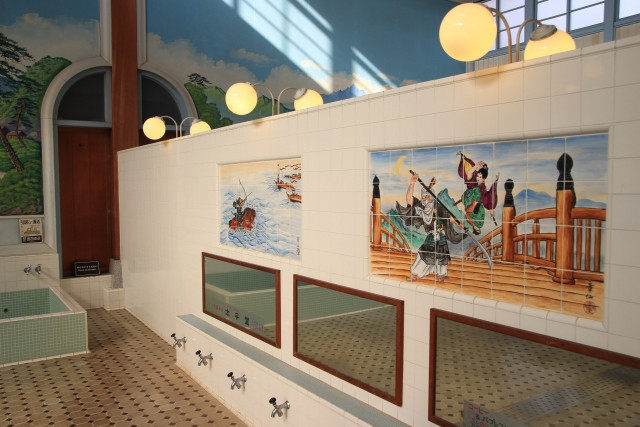
Here is a selection of Sento you may want to visit.Experience Japan’s traditional bathhouse for yourselves in these five public baths!
Atami-Yu
Located in Kagurazaka, Shinjuku Ward is traditional Sento Atami-Yu (熱海湯). The bathwater here is heated in the traditional method of burning firewood and is the pride of the Sento that has stuck to its traditions. A traditional looking building with numerous Japanese art pieces, it’ll make you feel like you have truly gone back in time.
Access: 3-mins walk from Iidabashi Station on the Chuo Line
Usage Fee: 470 yen (Adult)
※ Tokyo Sento, “Atami-Yu (Shinjuku Ward)”
TIP
For other Sento around Shinjuku, visit Shinjuku Sento.
Kotobuki Yu Sento
With a steady hot temperature of 40°C and convenient access, just 2-mins walk from Inaricho Station on the Ginza Line, is Kotobuki Yu Sento. Amenities including shampoo, body soap, skin care products, and hairdryer are free here. For an additional 250 yen, you can also enjoy their sauna facility.
Access:
-
7-mins walk from JR Ueno Station
-
2-mins walk from Inaricho Station
Usage Fee: 470 yen (Adult)
Ryougoku Bath House Edoyu
A Super Sento is a luxurious sento that is filled with various type of baths and saunas making it practically a spaland. One such super sento in Tokyo is Edoyu.
Edoyu boasts 6 types of baths (outdoor, jacuzzi, medicinal, etc.), 3 types of saunas (Finnish, aroma), 3 rock baths, and 6 spa facilities (Thai massage, beauty salon, etc.). It also has restaurants, working spaces, and resting areas.
Access: 5-mins walk from JR Ryogoku Station
Entrance Fee: 2,750 yen (Adult)
Konparu-Yu
Another historical Sento that was built in 1864 along Ginza Street. Originally a wooden structure, Konparu-Yu was rebuilt in 1957 to its present form. Konparu-Yu is one of two remaining Sento left in Ginza. The bath house has a traditional design including a wooden bandai manned by an attendant receiving payment and selling amenities, and a Taisho era clock. The baths are beautifully decorated with tile paintings depicting swimming koi, Mt. Fuji, flying birds, and other scenic views.
Access: 5-mins walk from JR Shimbashi Station or Tokyo Metro Ginza Station
Entrance Fee: 470 yen (Adult)
BathHaus
Located in Yoyogi-Uehara, BathHaus is a unique and modern take on Sento. BathHaus has a modern Western-influenced design that somehow still pays homage to Japanese traditions. Aside from a regular bath and shower area, Hinoki and Tile baths are also provided with herbal aromatic waters for calm and relaxation. Most interestingly, craft beer is served at this Sento for bathers to enjoy after a nice hot soak. They also serve beer snacks and dishes that go well with alcohol.
Access: 10-mins walk from Yoyogi, Yoyogi-Uehara, and Yoyogi-Hachiman Station
Entrance Fee: 700 yen (Adult)
Fast fact
Do Sento ban tattooed customers as well?
Same as Onsen, Sento do not usually permit tattoos. What you can do is cover up your tattoo seal or visit a tattoo-friendly Sento.
Summary

Just like Onsen, Sento is a great way to experience Japanese culture. If you think you might as well visit an Onsen instead of a boring old Sento, then visit a Super Sento or a unique one. Whatever it is, as long as you travel frequently in Japan, you are sure to encounter one so make yourself prepared. Here’s some quick info, if a hotel or guesthouse mentions shared bath facility, chances are it could

































